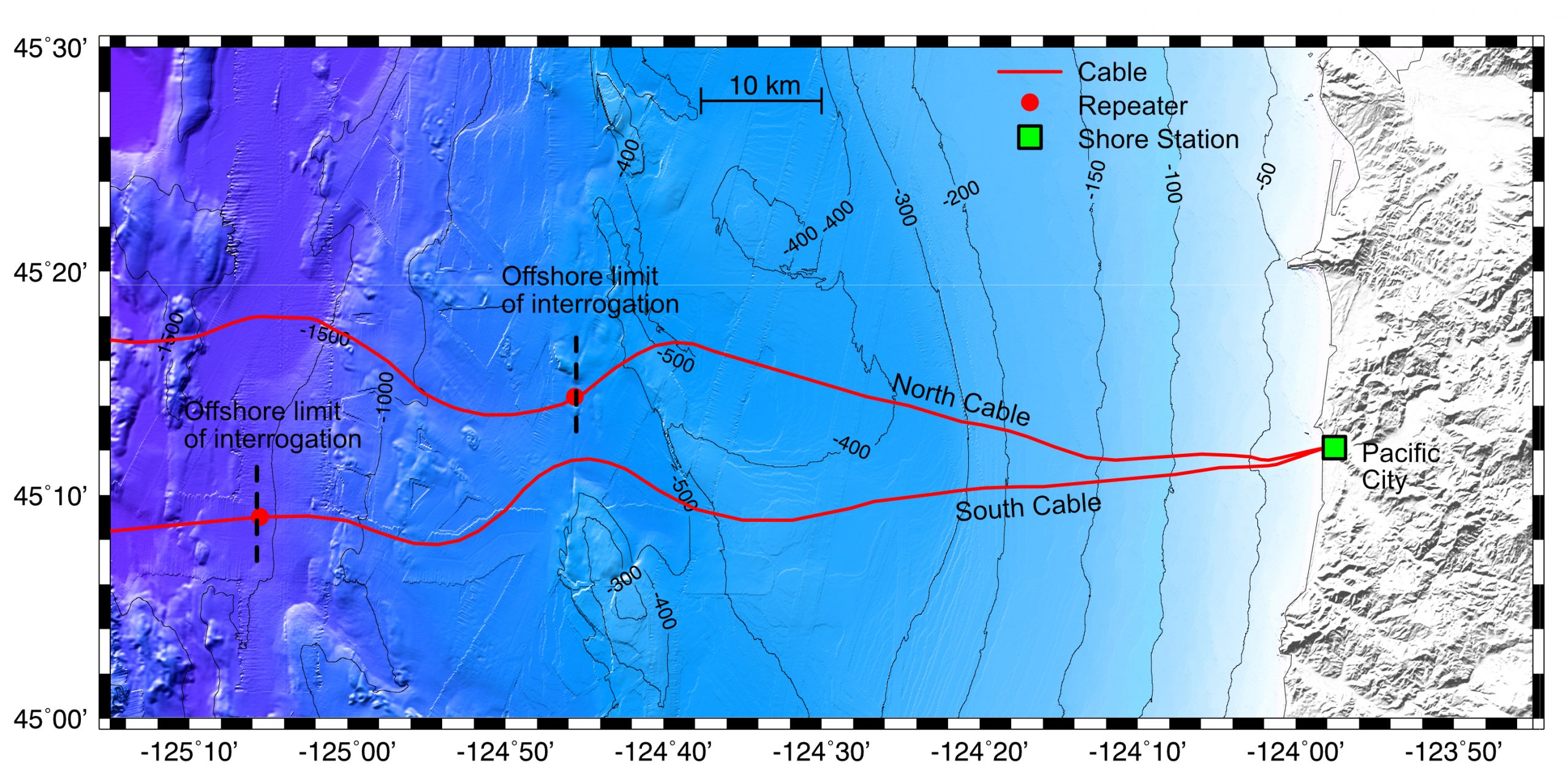RAPID: Distributed Acoustic Sensing on the OOI’s Regional Cabled Array
In November 2021, a team of scientists led by Dr. William Wilcock at the University of Washington conducted a community test of distributed acoustic sensing (DAS) and distributed temperature sensing (DTS) on the two submarine cables of the OOI Regional Cabled Array (RCA) extending off Pacific City, Oregon. DAS is an observational technique that interrogates an optical fiber with repeated pulses of light from a laser and utilizes changes in the phase of backscattered light to measure changes in the strain or strain rate along the fiber. The method works to distances of up to ~100 km and has a spatial resolution of meters. A DAS fiber optic cable acts somewhat like a long line of closely spaced single-axis horizontal broadband seismometers. DTS is a related technology that in the configuration used in this experiment measures changes in relative temperature along a fiber.
The 4-day test was conducted from November 1-5 during a scheduled maintenance shutdown of the OOI RCA. The OOI RCA has two cables extending off Pacific City Oregon, the north cable which extends to Axial Seamount and the south cable that loops back onto the continental margin off Newport to the south of Pacific City. Each cable has two optical fibers, the transmit and receive fibers for observatory data. The DAS observations extended to the first optical repeaters which are about 95 km and 65 km offshore for the north and south cables, respectively.
The experiment used two Optasense and one Silixa DAS interrogators and one Silixa DTS unit and the data was acquired with the help of field engineers from both companies. During the day on November 1, a series of short tests were conducted by Optasense and Silixa to determine the optimal recording parameters. Starting in the afternoon of November 1, the configurations were set. DAS data were collected by Optasense on the transmit fibers of both cables with Silixa collecting DAS data on the receive fiber of the south cable and DTS data on the receive fiber of the north cable. On the final morning, the Optasense DAS units were switched to the receive fibers and the Silixa DAS unit to the transmit fiber of the south cable.
Within the data repository in a directory processed/metadata can be found various information including experiment reports by both Optasense and Silixa, descriptions of the experiment geometry, and information about reading data. A readme.pdf file within that directory describes the contents. Users may also sign up to a mailing list that will be used to share occasional updates.
Note that the total volume of data is about 26 TB. Investigators requesting large volumes of data should contact Mitch Elend to arrange to send hard disk drives which will be returned with the requested data.
Access DAS Data
